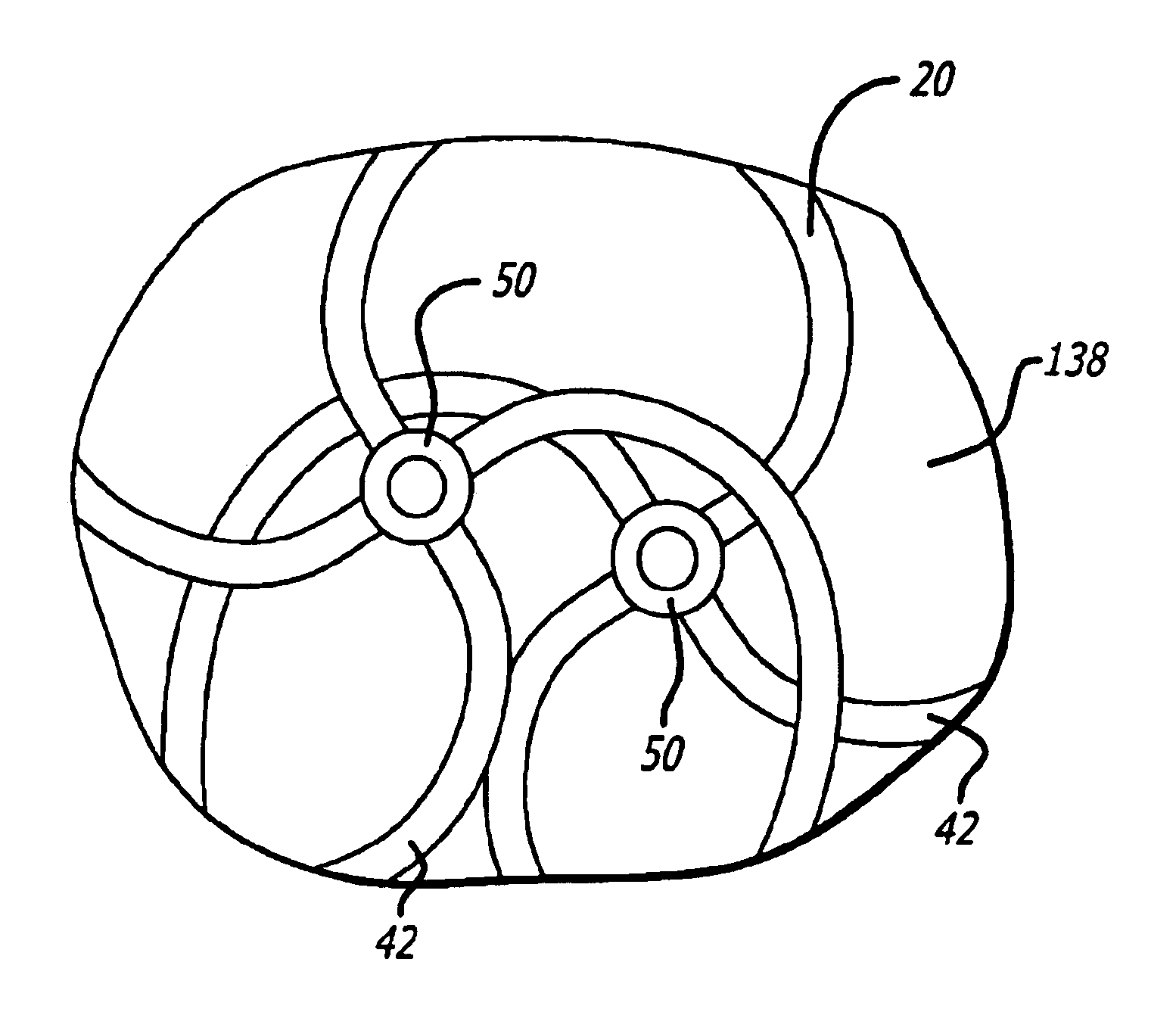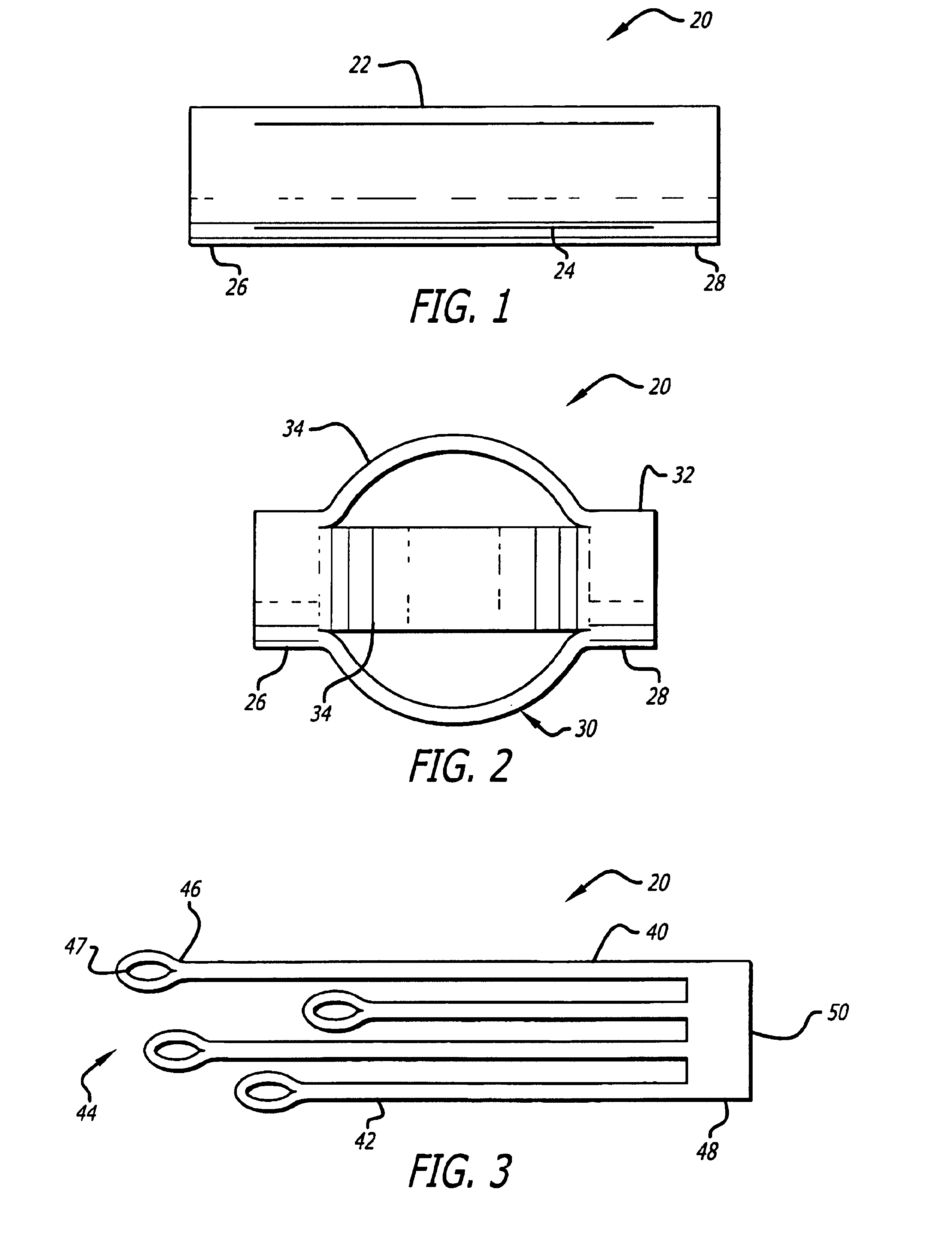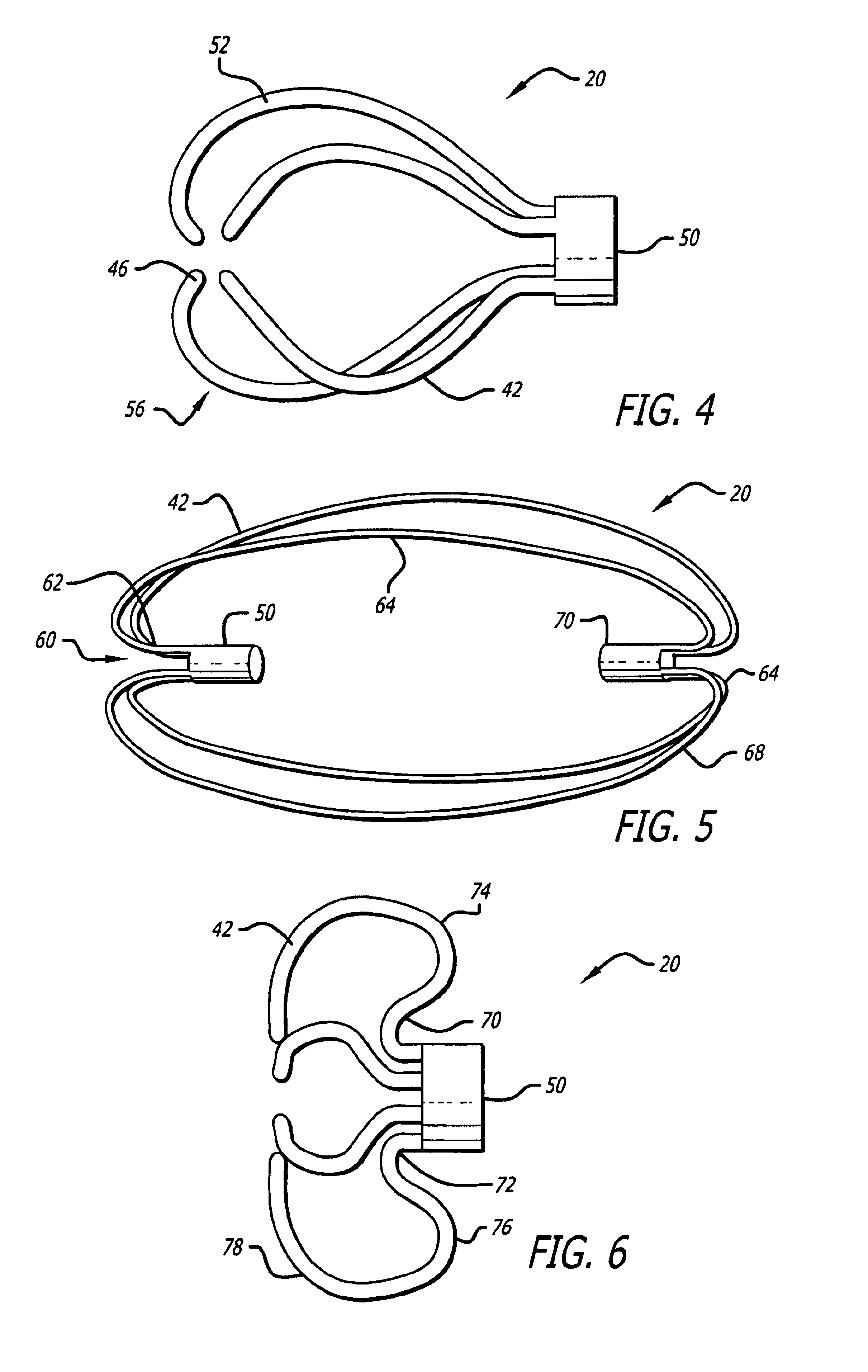Intrasaccular embolic device
a technology of intravascular embolism and stent, which is applied in the field of intravascular repair methods and devices, can solve the problems of dislocation, unfavorable blockage, and inability to achieve the desired effect, and achieve the effect of improving coverag
- Summary
- Abstract
- Description
- Claims
- Application Information
AI Technical Summary
Benefits of technology
Problems solved by technology
Method used
Image
Examples
Embodiment Construction
[0034]Referring now to the drawings, and specifically to FIGS. 1 and 2, there is shown one embodiment of an intrasaccular device of the present invention. The intrasaccular device of the present invention is particularly suited for treating hollow spaces found within a patient's body. In particular, the intrasaccular devices are adapted for facilitating the repair of aneurysms formed in sidewalls of vasculature as well as at bifurcations or terminal ends of vasculature. The devices include structure that provides an effective framework and coverage across an opening to the aneurysm sac. Moreover, due to their novel design, the intrasaccular devices of the present invention are useful in treating highly tortuous and narrow vasculature such as the neurovasculature.
[0035]In one aspect of the present invention, intrasaccular device 20 has a monolithic body formed from a tube 22. The tube 22 has a plurality of parallel slits or slots 24 extending longitudinally substantially the length o...
PUM
 Login to View More
Login to View More Abstract
Description
Claims
Application Information
 Login to View More
Login to View More - R&D
- Intellectual Property
- Life Sciences
- Materials
- Tech Scout
- Unparalleled Data Quality
- Higher Quality Content
- 60% Fewer Hallucinations
Browse by: Latest US Patents, China's latest patents, Technical Efficacy Thesaurus, Application Domain, Technology Topic, Popular Technical Reports.
© 2025 PatSnap. All rights reserved.Legal|Privacy policy|Modern Slavery Act Transparency Statement|Sitemap|About US| Contact US: help@patsnap.com



